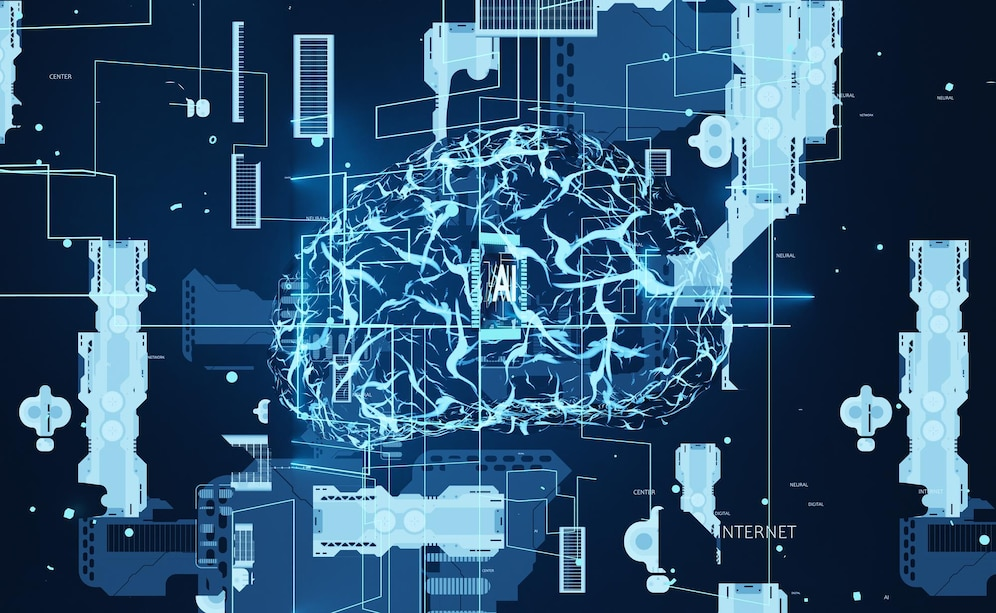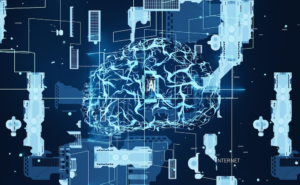Leading the way in this brave new world of human-computer interaction (or HCI) are neural interfaces which as you may have guessed by now makes direct communication between your brain and devices possible. In this article, we examine the transformative opportunities and challenges of neural interfaces by analyzing present use cases as well potential future applications in multiple disciplines along with new technological capabilities that are shaping their development.
Neural Interfaces Explained
Via neural interfaces, which are better known as brain computer interfaces (BCIs) an artificial communication pathway is created between the human or any animal and system. Sensors that receive and interpret electrical impulses (neural signals) produced by neurons, to be translated into commands for device or application control. Or conversely, it could provide sensory feedback to the brain for a complete interaction loop.
Neural Interface Elements
Neural Sensors: These are devices that can detect neural (electrical) activity using electrodes attached to – or implanted in the brain. Sophisticated sensors respond with the utmost precision to a microscopic level,EEG and visualize brain regions that are responsible for specific intent.
Through algorithms, the neural signals are processed and patterns decoded into commands suitable for action. This module is indispensable for interpreting real time and in accordance with user objectives.
OUTPUT-Devices: like prosthetic limbs or computer interfaces (or even virtual-reality systems) that receive processed signals and can translate them into physical actions of a user.
Applications of Neural Interfaces Now
Neural interfaces are rewriting the rules of science, and opening up new possibilities for human health that were inextricably tied to future technologies.
Medical/Rehab Application
Revolutionized Medical care and Rehabilitation with Neural Interfaces:
Prosthetics control: People suffering from limb loss and paralysis are enabled to control prosthetic limbs using their neural signals. For instance, the BrainGate system advances a great deal to control a robotic arm very effectively, give people limb independency and make them mobile.
Neurological disorder: BCIs help person control epilepsy, Parkinson’s disease, and other neurological disturbances. It is done by monitoring real-time brain activity and, consequently, providing the possibility for a targeted therapy intervention.
Communication aids: Patients with speech or verbal impairments can communicate successfully. This is accomplished by using their neural signals for speech synthesis. This is an adequate and highly efficient form of a verbal interaction, helping patients in their social adaptation.
Assistive Technologies
Neural interfaces empower users with disabilities to
interact more independently with their environment
Accessibility Devices: Through neural signals, we control wheelchair navigation, environmental control systems and ease our routine daily living.
The blind have developed the ability to translate visual or auditory information into tactile sensations (sensory substitution), so that they can provide sensory feedback for enhanced sensory abilities.
Research and Exploration
Neural interfaces drive neuroscience research and
exploration:
Brain Mapping: Studying neural circuits and brain function improves our knowledge of cognitive processes, memory formation and sensory perception.
Neuroplasticity Research: BCIs permit investigation of brain plasticity, which is the ability to show structual and functional changes resulting from learning or experiences with injury.
Defense and Industry Applications
Neural interfaces are explored for military and
industrial applications:
Military:
Enhanced situational awareness, control of unmanned vehicles, and
communication through covert interfaces improve operational efficiency and
safety.
Industrial
Control: Neural interfaces enable precise control in manufacturing
processes, enhancing productivity and worker safety.
Consumer Electronics
In the consumer sector, neural interfaces are advancing
entertainment and everyday applications:
Gaming
and Virtual Reality: BCIs enhance gaming experiences with immersive
interactions and real-time feedback based on neural responses.
Adaptive interfaces: Personalized computing meets the needs of users rather than technology by taking into account user profiles, preferences and cognitive workload in digital environments.
Recent Progress in Brain-Computer Interfaces
Breakthroughs in technology have significantly upgraded neural interfaces recently:
The development of miniaturization and biocompatibility Full size image
Nanotechnology: miniaturized sensors and implants make devices less invasive, more comfortable for users in the long-term.
Biocompatible
Materials: Advanced materials minimize immune responses and tissue
rejection, improving integration with neural tissue.
Wireless connectivity and signal processing
Wireless Interfaces: Removal of the physical connection helps to decrease contagion risks and increase mobility, allowing 24 hour monitoring as well as cellular data transmission.
Advanced
Signal Processing: Machine learning algorithms optimize signal
interpretation, adapting to individual neural patterns and improving
interface responsiveness.
Closed-Loop Systems and Brain-Machine Integration
Closed-Loop
Feedback: Real-time feedback adjusts interface responses based on neural
activity, improving accuracy and user control.
Brain-Machine
Fusion: Integrative approaches aim for seamless integration with neural
tissue, fostering symbiotic relationships between humans and machines.
Ethical Considerations and Challenges
The development and deployment of neural interfaces raise
significant ethical considerations:
Privacy and Security
User Privacy: Any user neural data cannot be accessed by unauthorized users to protect the confidentiality of multi human in exclusive brain space.
Informed Consent: When invasive procedures and risks are involved, informed consent processes must respect patient autonomy standards as well as ethical requirements.
Equity and Accessibility
Accessibility:
Ensuring universal access to neural interfaces mitigates disparities in
healthcare and technology access, promoting inclusivity and equitable
distribution.
Technological
Divide: Addressing cost barriers and technological literacy gaps ensures
broader adoption and societal benefit.
Neuroethical Implications
Cognitive enhancement: extends neural capabilities beyond limits of nature, contentious aspect in ethical debates (e.g. sometimes it is unfair [vain obscuring the possibilities that change within collective cognition brings] and worries regarding societal implications trickle)
Future Implications and Trends
Looking ahead, neural interfaces promise to redefine HCI
and societal dynamics:
Enhanced Human Capabilities
Cognitive
Augmentation: BCIs may augment memory, learning capabilities, and
decision-making processes, enhancing human potential in cognitive tasks.
Sensory
Enhancement: Advancements in sensory feedback and substitution could
expand sensory perception, offering new ways to experience and interact
with the world.
Collaborative Intelligence
AI
Integration: Combining BCIs with artificial intelligence fosters
collaborative intelligence systems that optimize human-machine
interaction, decision-making, and problem-solving.
Collective
Connectivity: Neural networks enable direct communication between
individuals, revolutionizing collaborative efforts and group dynamics.
Healthcare Innovations
Personalized
Medicine: BCIs enable personalized healthcare interventions, from
neuroprosthetics to targeted therapies for neurological disorders and
mental health conditions.
Remote
Healthcare: Telemedicine applications leverage BCIs for remote patient
monitoring and treatment, expanding access to specialized care.
Ethical and Regulatory Frameworks
Ethical
Guidelines: Developing robust frameworks ensures responsible development,
deployment, and use of neural interfaces, addressing societal values and
human rights.
Regulatory
Standards: Establishing regulatory oversight safeguards against misuse,
promoting ethical standards in research, healthcare, and consumer
applications.
Conclusion
Neural interfaces are with the Next Frontier of Technological Innovation and presents new horizon for improving human performance, Health outcomes, DVR technology assist humans. BCIs: From Medical Rehabilitation and Assistive Technologies to Immersive Gaming Experiences and Cognitive Enhancements-What BCIs can be Used for across Industry Sectors as well as Domains
The realization of the full potential of neural interfaces has critical challenges yet to be confronted, including numerous ethical implications combined with technological progress and societal impacts. Through interdisciplinary collaboration, responsible development and care for patient welfare, we can responsibly develop neural interfaces.
As we continue to research and the capabilities of neural interfaces develop, there is likely much more on offer that will inform a future where humans are symbiotic with machines working in tandem together creating dimensions of humanity colliding with creativity this intertwining world could unleash. Welcoming these advancements with critical reflection on their ethical and societal implications will help ensure that the future of BCIs is one where human lives are enriched by neural interfaces which respect our ethical principles.

